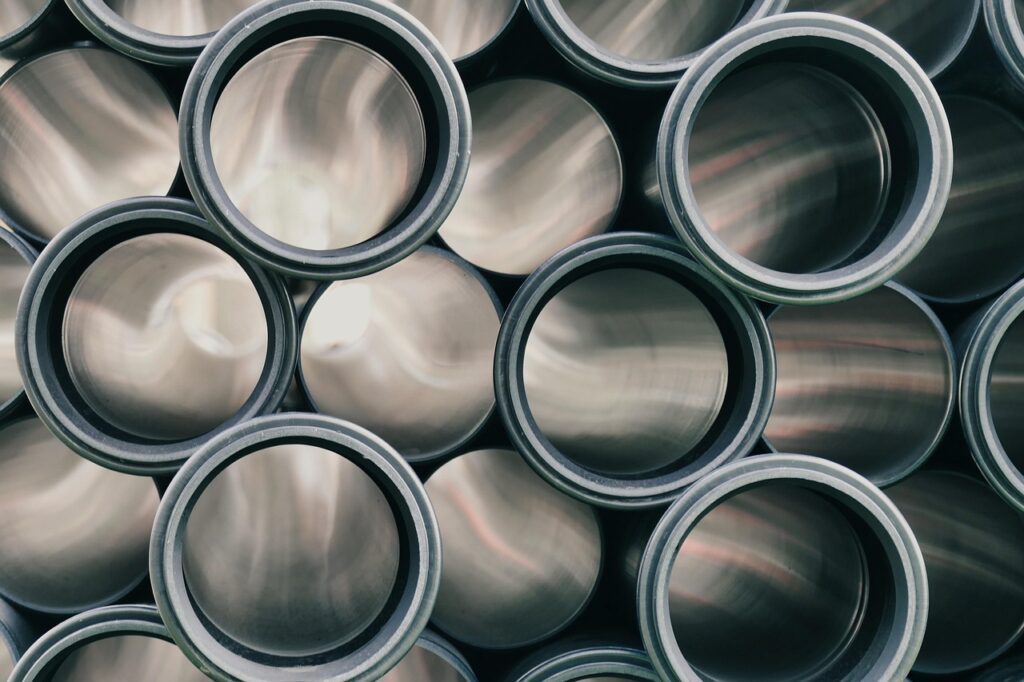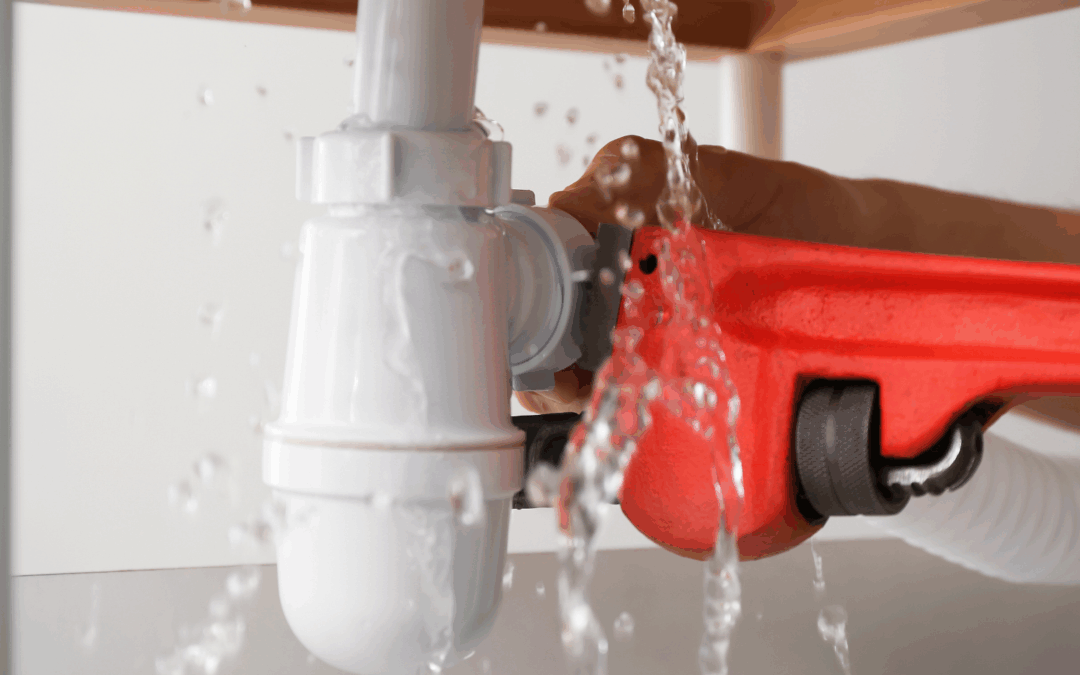Choosing the right plumbing pipes for your home is one of the most important decisions you’ll make during construction or renovation. The pipes you select will carry your potable water for decades, affecting everything from water quality to maintenance costs. Two materials dominate residential plumbing systems: traditional copper pipes and the newer cross-linked polyethylene (PEX) tubing.
Both copper plumbing and PEX pipes offer distinct advantages for different situations. Copper water pipes have been the gold standard for generations, prized for their durability and reliability. Meanwhile, PEX tubing has gained popularity for its flexibility and ease of installation. Understanding the differences between these piping materials will help you make an informed decision for your plumbing project.
This comprehensive guide examines every aspect of PEX vs copper, from installation costs to long-term performance. Whether you’re building new construction or replacing existing copper pipes, you’ll discover which option best suits your specific needs and budget.
Schedule Service Online
Get a free estimate so you know what you're signing up for
"*" indicates required fields
For Emergency Services Call: 410-255-9300
Understanding PEX and Copper Piping Materials
What is Cross-Linked Polyethylene? (PEX Pipes)
PEX, short for cross-linked polyethylene, represents a revolutionary advancement in plumbing applications. This flexible plastic pipe consists of polyethylene that has undergone a chemical process creating cross-links between polymer chains. The result is a highly flexible tubing that maintains its shape while resisting temperature extremes and chemical degradation.
Unlike rigid piping options, PEX tubing can bend around corners and navigate tight spaces without requiring elbow fittings at every turn. This flexibility makes it ideal for retrofitting older homes where accessing existing plumbing lines proves challenging. PEX pipes come in three main types: PEX-A, PEX-B, and PEX-C, each manufactured using different cross-linking methods that affect flexibility and temperature resistance.
Understanding Copper Plumbing
Copper tube systems have served residential and commercial buildings for over a century. These metal pipes offer exceptional durability and natural antimicrobial properties that help maintain water quality. Copper plumbing consists of rigid sections connected with compression fittings, brass fittings, or soldered joints.
The material comes in different grades, with Type M copper being most common for residential water supply lines. Type L copper, with thicker walls, is often required by building codes for commercial applications or areas with acidic water conditions. Copper pipes require more fittings than flexible piping systems, as each change in direction necessitates an elbow fitting or similar connector.
Installation Comparison: PEX vs Copper
PEX Installation Advantages
Installing PEX tubing requires significantly less labor than copper systems. The flexible piping can be run in long continuous lengths from the water source to individual fixtures, requiring fewer connections throughout the plumbing system. This characteristic reduces potential leak points and speeds installation time.
PEX systems often use manifold distribution, where hot and cold water lines run directly from central distribution points to each fixture. This approach eliminates the traditional trunk-and-branch system, providing more consistent water pressure and easier shutoff valve control for individual fixtures.
The material’s flexibility allows it to navigate around obstacles, through tight spaces, and even be pulled through existing walls during renovation projects. Unlike rigid copper tube systems, PEX doesn’t require precise measurements and cutting at every connection point.
Copper Installation Requirements
Installing copper plumbing demands greater skill and specialized tools. Each joint requires either soldering with flux and torch work or mechanical connections using compression fittings. The rigid nature of copper tube means installers must cut precise lengths and use elbow fittings for every directional change.
Labor costs for copper installation typically run higher due to the time-intensive nature of soldering joints and the skill level required. However, experienced plumbers can install copper systems efficiently, and the end result provides decades of reliable service when properly maintained.
Copper systems require careful planning to minimize fittings and connections. Each additional fitting increases both material costs and potential failure points, making system design crucial for long-term reliability.
Performance and Durability Factors
Temperature Resistance and Thermal Performance
Both materials handle hot water effectively, but with different characteristics. PEX tubing maintains flexibility across a wide temperature range, from freezing pipes to water heater temperatures. The material won’t become brittle in cold weather and can expand slightly when water freezes, often preventing freeze breakage that would split rigid pipes.
Copper pipes conduct heat more efficiently than PEX, which can be advantageous or problematic depending on your perspective. Copper water pipes may lose more heat during transport, potentially increasing energy costs, but they also warm up quickly when hot water flows through them.
Pressure Rating and Water Flow
Both piping materials handle typical residential water pressure without issues. PEX pipes maintain smooth interior surfaces throughout their lifespan, preventing mineral buildup that can restrict water flow over time. The flexible tubing also reduces turbulence at connections, maintaining optimal flow rates.
Copper plumbing provides excellent water flow when new, but mineral deposits can accumulate over decades, particularly in areas with hard water. These deposits gradually reduce pipe diameter and restrict water flow, though proper maintenance can minimize this issue.
Resistance to Environmental Factors
PEX tubing shows excellent resistance to most chemicals found in municipal water systems, but can be damaged by UV light and direct sunlight. This limitation restricts its use in outdoor applications unless properly protected. Some PEX materials may also be susceptible to rodent damage in certain installations.
Copper pipes resist most environmental factors exceptionally well, including UV exposure, making them suitable for outdoor applications. However, acidic water conditions can cause pinhole leaks in copper over time, particularly in areas with soft or chemically treated water supplies.
Cost Analysis: Material and Labor Expenses for Your Plumbing Project
Initial Material Costs
PEX tubing costs significantly less per linear foot than copper tube, making it attractive for budget-conscious projects. The price difference becomes more pronounced in larger installations where hundreds of feet of piping are required. Additionally, PEX systems require fewer fittings due to the material’s flexibility, further reducing material costs.
Copper pipe prices fluctuate with metal commodity markets, sometimes reaching premium levels that make large projects expensive. However, copper’s long-term value and recyclability can offset some initial cost concerns.
Labor Cost Considerations
Installation labor represents where PEX truly shines economically. The ease of installation and reduced connection requirements mean fewer labor hours for most plumbing projects. This advantage becomes especially significant in new construction where multiple fixtures require water supply lines.
Copper installation requires more specialized skills and time, translating to higher labor costs. However, in situations requiring outdoor applications or where longevity is paramount, the additional labor investment may prove worthwhile over the system’s lifetime.
Water Quality and Health Considerations
Drinking Water Safety
Both materials are approved for potable water systems and meet health standards for drinking water applications. PEX tubing undergoes rigorous testing to ensure no harmful chemicals leach into water supplies. Modern PEX formulations have addressed early concerns about taste and odor issues.
Copper naturally resists bacterial growth and has antimicrobial properties that can benefit water quality. However, copper pipes may contribute trace amounts of copper to drinking water, which is generally not harmful and may even provide health benefits in small quantities.
Long-term Water Quality Impact
PEX maintains consistent water quality throughout its service life, as the smooth interior surface resists mineral buildup and bacterial growth. The material doesn’t corrode or develop the patina that characterizes aging copper systems.
Copper plumbing may develop internal scaling in hard water conditions, potentially affecting taste and requiring periodic maintenance. However, many homeowners prefer the taste of water from copper pipes, and the material’s natural properties help maintain water quality in other ways.
Climate and Application Considerations
Cold Weather Performance
PEX tubing excels in cold weather applications due to its flexibility and expansion capabilities. When water freezes inside PEX pipes, the material can expand slightly without splitting, often preventing the catastrophic failures common with rigid piping materials. This characteristic makes PEX particularly valuable in unheated spaces or areas prone to freezing.
Copper pipes are more susceptible to freeze breakage, as the rigid material cannot accommodate the expansion that occurs when water turns to ice. However, proper insulation and installation techniques can minimize freeze risks in copper systems.
High Temperature Applications
Both materials handle typical residential hot water temperatures effectively. PEX maintains its flexibility and integrity at standard water heater temperatures, while copper pipes conduct heat efficiently without degradation.
For specialized applications requiring very high temperatures, copper may offer advantages due to its superior heat conductivity and time-tested performance in extreme conditions.
Maintenance and Longevity
Expected Lifespan
Properly installed PEX systems can last 25-40 years, with some manufacturers offering warranties up to 25 years. The material’s resistance to corrosion and scaling contributes to its longevity, particularly in challenging water conditions.
Copper plumbing systems regularly exceed 50 years of service life, with many installations lasting 70+ years when properly maintained. The material’s track record for longevity makes it attractive for homeowners planning long-term residence.
Maintenance Requirements
PEX systems require minimal maintenance beyond standard plumbing care. The smooth interior surfaces resist buildup, and the flexible connections rarely develop leaks when properly installed. However, UV protection is essential for any exposed sections.
Copper plumbing may require periodic maintenance to address mineral buildup or corrosion issues. Regular inspection of joints and connections helps identify potential problems before they become major issues. The material’s recyclable nature means replacement components retain value even after service life.
Making the Right Choice for Your Project
Best Applications for PEX
PEX tubing excels in several specific scenarios. New construction projects benefit from PEX’s easy installation and lower costs. Retrofit applications where accessing existing plumbing is challenging make PEX’s flexibility invaluable. Areas prone to freezing conditions favor PEX’s expansion capabilities.
Budget-conscious projects often find PEX’s lower material and labor costs attractive. The vast majority of residential plumbing installations can benefit from PEX’s advantages, particularly when working within tight spaces or complex routing requirements.
When Copper Makes Sense
Copper remains the better choice for specific applications. Outdoor installations exposed to direct sunlight require copper’s UV resistance. Areas with acidic water may actually favor copper over PEX, despite potential corrosion concerns. Historic renovations often specify copper to maintain authenticity.
Commercial applications or high-end residential projects may prefer copper for its proven longevity and perceived quality. Some building codes specifically require copper for certain applications, making material choice predetermined.
Decision-Making Process
Key factors in your decision should include budget constraints, local building codes, water quality conditions, and long-term residence plans. Climate considerations, particularly freeze risk and UV exposure, may influence material selection. Installation complexity and available contractor expertise also play important roles.

Consult With A Professional Plumber Like MD Sewer and Plumbing
Consider consulting with local plumbing professionals who understand regional water conditions and building requirements. MD Sewer has experience with both materials and can provide valuable insights for your decision-making process.
Helpful Resources
To assist you in making an informed decision about PEX and copper piping for your plumbing project, we’ve compiled a list of useful resources and websites:
The Spruce – Different Kinds Of Pipes
This comprehensive guide highlights the differences, advantages, and drawbacks of using PEX and copper pipes and goes over other pipe materials.
Explore cost comparisons, including material and installation costs for both PEX and copper piping.
Learn about different pipe materials, including an in-depth analysis of PEX and copper.
This Old House – Copper vs PEX Plumbing
This resource provides expert insights on the pros and cons of copper and PEX piping systems.
Green Building Advisor- PEX vs Copper Plumbing Guide
A detailed breakdown of PEX and copper pipes, focusing on their performance, application, and cost.
Family Handyman – Plumbing Pipes and How To
Discover practical tips on choosing the right plumbing materials, with a focus on PEX and copper.
Comparing PEX and Copper Pipes Pros and Cons
A concise comparison of PEX and copper, covering key factors like durability, installation, and safety.
These resources offer valuable insights and information to help you decide which piping material fits your plumbing needs. Explore them to ensure your plumbing project is a success!
Your Path Forward with Plumbing Pipe Selection
Choosing between PEX vs copper ultimately depends on your specific circumstances, budget, and long-term goals. PEX offers compelling advantages in terms of cost, installation ease, and freeze resistance, making it an excellent choice for most residential applications. Copper provides unmatched longevity and proven performance, particularly valuable for permanent installations and challenging environments.
Both materials will serve you well when properly installed and maintained. PEX represents modern efficiency and cost-effectiveness, while copper offers time-tested reliability and premium performance. Your best material choice aligns with your project requirements, local conditions, and personal priorities.
Don’t let this important decision overwhelm your plumbing project. Professional plumbers understand the nuances of both systems and can help you select the right piping option for your specific situation. Whether you choose the flexibility of PEX or the durability of copper, proper installation remains crucial for optimal performance and longevity.





